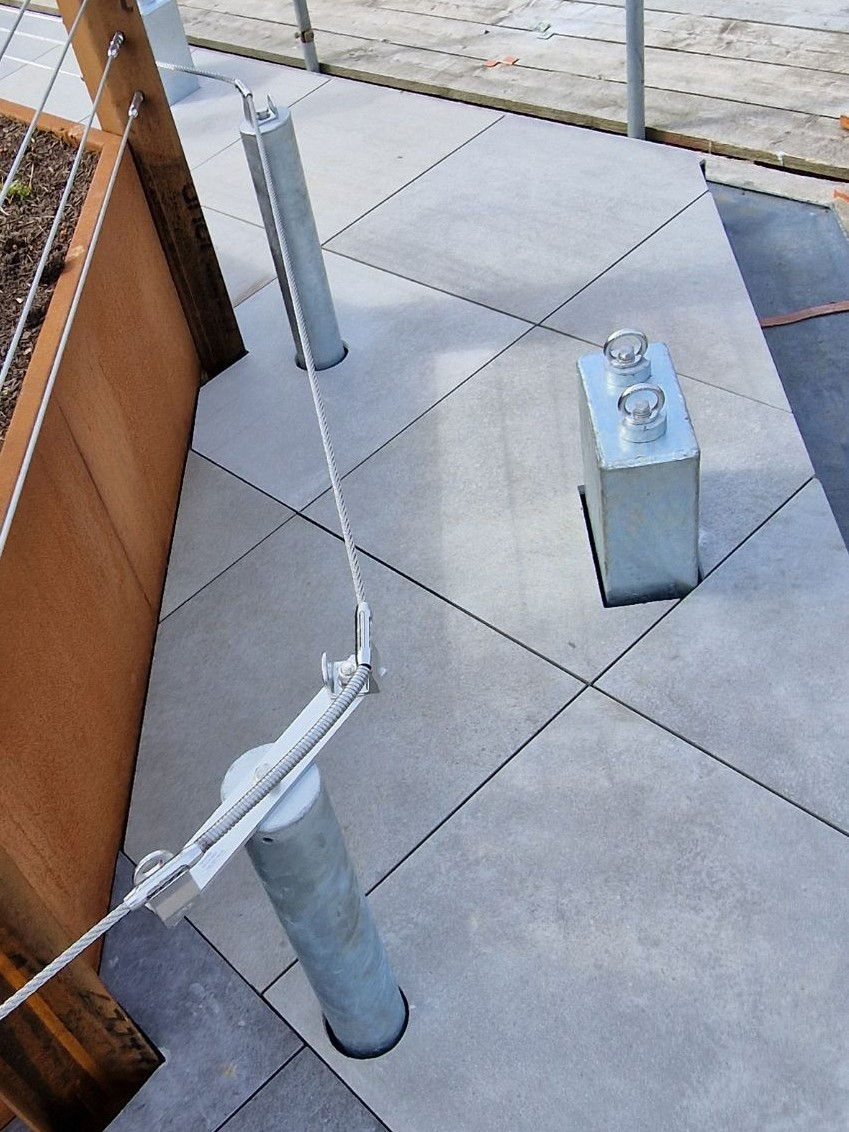A Guide to Fall Protection
- Alex Highton
- Jan 6
- 3 min read
What is Fall Protection?
Fall protection is a crucial element of workplace safety, especially in industries where employees are required to work at height. In the UK, strict regulations and innovative equipment ensure worker safety and compliance, minimising accidents and fatalities. This article explores the types of fall protection equipment, UK safety regulations, and best practices for workplace safety.

Fall Protection Equipment
Effective fall protection relies on the proper selection and use of equipment. Below are key types of fall protection equipment and their roles in ensuring safety:

Horizontal Lifelines
Horizontal lifelines are versatile systems that provide continuous fall protection across expansive work areas. These systems allow workers to move freely along a fixed line, ensuring safety while maintaining productivity.

Mobile Man Anchors
Mobile man anchors offer a portable solution for temporary fall protection. Designed for use on flat or low-slope surfaces, these anchors can be easily repositioned, providing flexibility for various work environments..

Fixed Access Ladders
Fixed access ladders ensure safe vertical movement for workers accessing elevated areas. These ladders often include safety features like integrated fall arrest systems or cages to prevent falls.

Roof Access & Roof-light Protection
Fixed access ladders ensure safe vertical movement for workers accessing elevated areas. These ladders often include safety features like integrated fall arrest systems or cages to prevent falls.

Abseil & Rope Access Systems
Abseil and rope access systems are specialised solutions for tasks requiring precise manoeuvrability at height. These systems are frequently used for maintenance, inspections, and repairs in hard-to-reach areas.

Guardrails & Rooftop Walkways
Guardrails and rooftop walkways provide collective protection for workers. Guardrails act as a passive barrier to prevent falls, while walkways ensure safe, non-slip access across roof surfaces, reducing the risk of accidents.


UK Safety Regulations
Guardrails and rooftop walkways provide collective protection for workers. Guardrails act as a passive barrier to prevent falls, while walkways ensure safe, non-slip access across roof surfaces, reducing the risk of accidents.

Work at Height Regulations 2005 (WAHR)
WAHR is the cornerstone of fall protection legislation in the UK. Employers are legally required to:
Avoid working at height where possible.
Implement measures to prevent falls when working at height cannot be avoided.
Mitigate the consequences of a fall if it occurs.
Ensure all work at height is properly planned, supervised, and carried out by competent individuals.
Use suitable equipment that is regularly inspected and maintained to ensure its safety.

Health and Safety at Work Act 1974
This overarching law mandates that employers ensure the safety and welfare of employees at work. Specific responsibilities include:
Conducting thorough risk assessments to identify and control hazards.
Providing necessary safety training and personal protective equipment (PPE).
Establishing effective communication about potential risks and safety procedures.

Management of Health & Safety at Work Regulations 1999
These regulations emphasise the need for a systematic approach to managing workplace risks, including those related to working at height. Key provisions include:
Regularly reviewing and updating risk assessments.
Implementing control measures tailored to specific workplace environments.
Ensuring that workers understand their roles and responsibilities regarding safety.

Personal Protective Equipment at Work Regulations 1992
This legislation requires employers to provide appropriate PPE, including fall protection equipment, free of charge. Employers must also ensure:
Proper training on the use and maintenance of PPE.
Regular checks to confirm that PPE is fit for purpose and in good condition.

British Standards for Fall Protection Equipment
All fall protection equipment must comply with specific British Standards, such as:
BS EN 363:2008: Covers requirements for fall arrest systems.
BS EN 365:2004: Specifies guidelines for inspection, maintenance, and marking of fall protection equipment.
BS EN 795:2012: Provides standards for anchor devices used in personal fall protection systems.

Enforcement by the Health and Safety Executive (HSE)
The HSE is responsible for monitoring compliance, conducting inspections, and providing guidance on fall protection best practices. The agency has the authority to issue improvement notices, fines, or prosecute employers who fail to comply with safety laws.


Best Practices for Employers
Employers must adopt the following best practices to ensure worker safety and regulatory compliance:
Risk Assessments
Conduct thorough risk assessments for all activities involving work at height. Identify hazards and implement appropriate controls.
Training
Provide comprehensive training on hazard recognition, proper use of fall protection equipment, and emergency procedures.
Equipment Maintenance
Regularly inspect and maintain all fall protection equipment to ensure its reliability and effectiveness.
Emergency Planning
Develop and rehearse rescue plans to ensure a quick and effective response in case of a fall.

ProAltus Group Fall Protection
Have questions about fall protection or need expert advice tailored to your project? Speak to one of our experts on 01638 781 541.

.png)



Comentarios